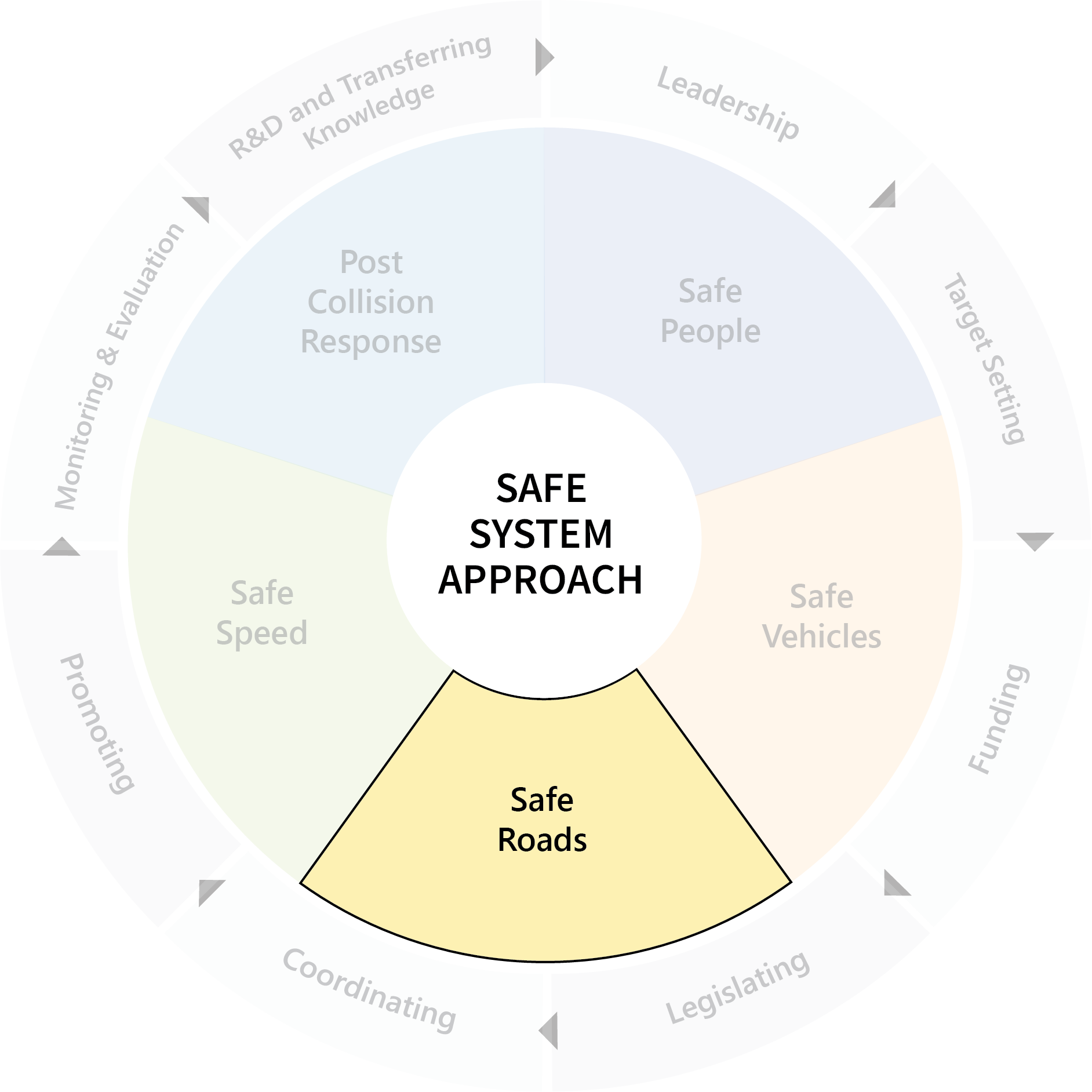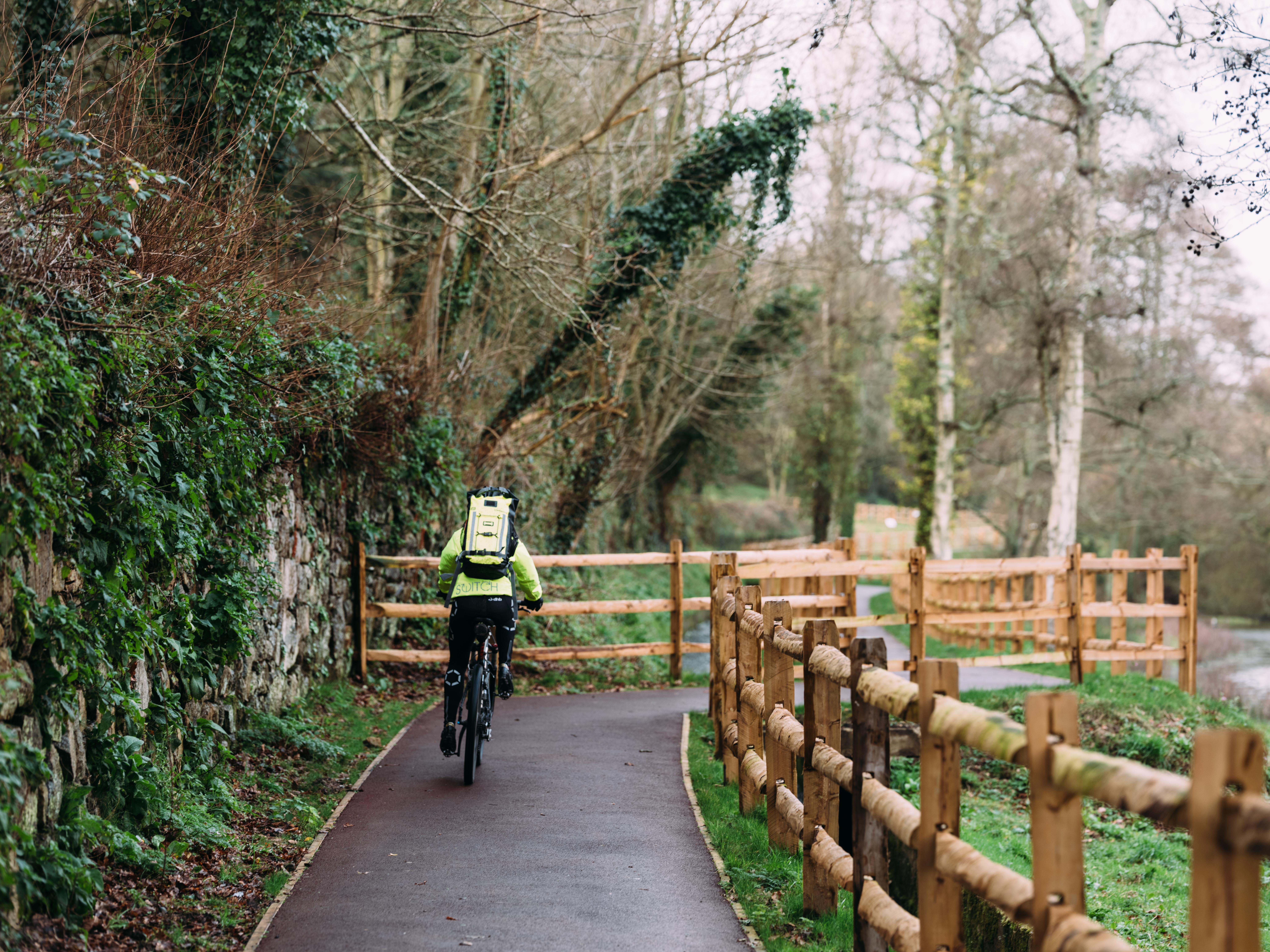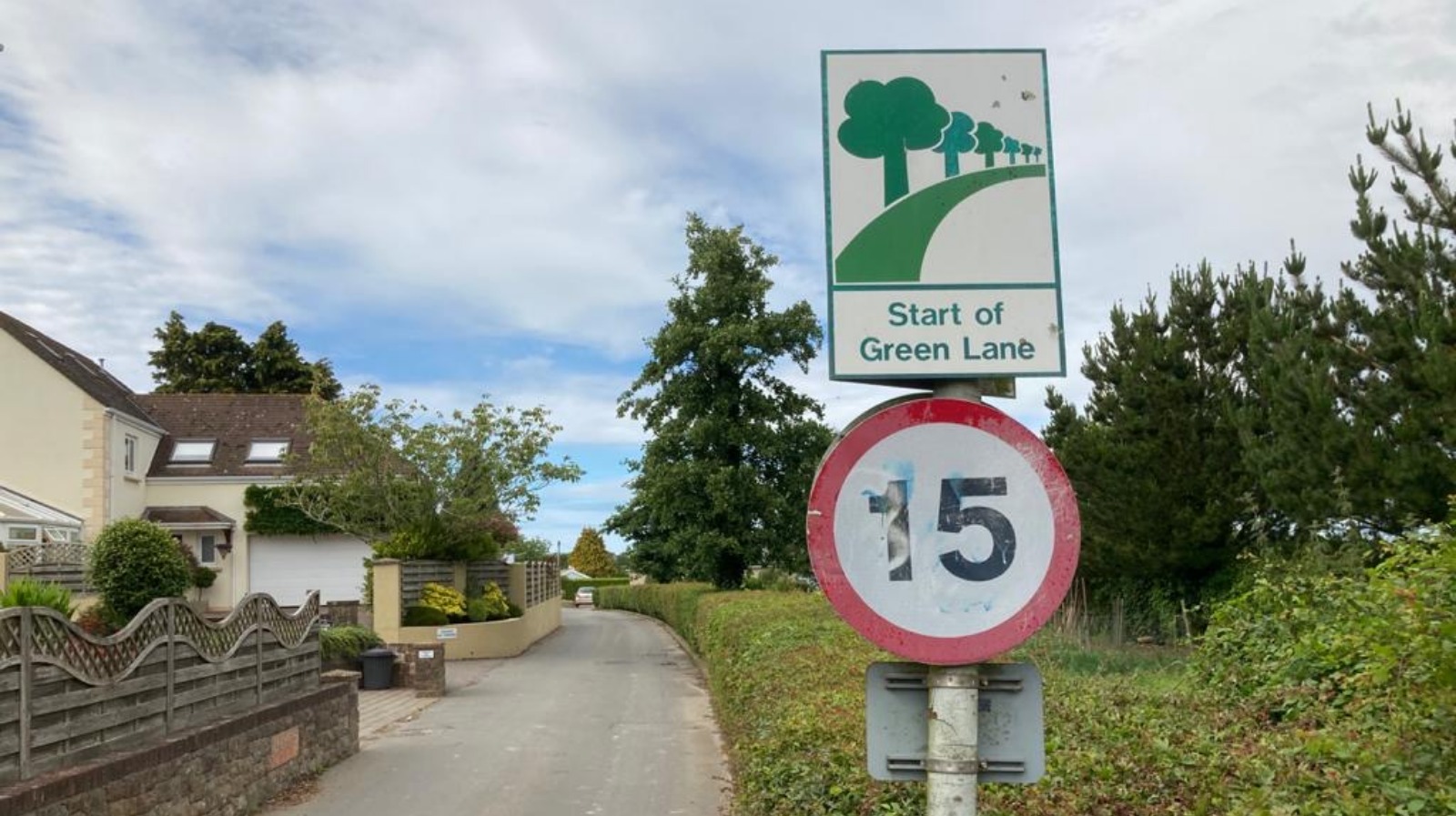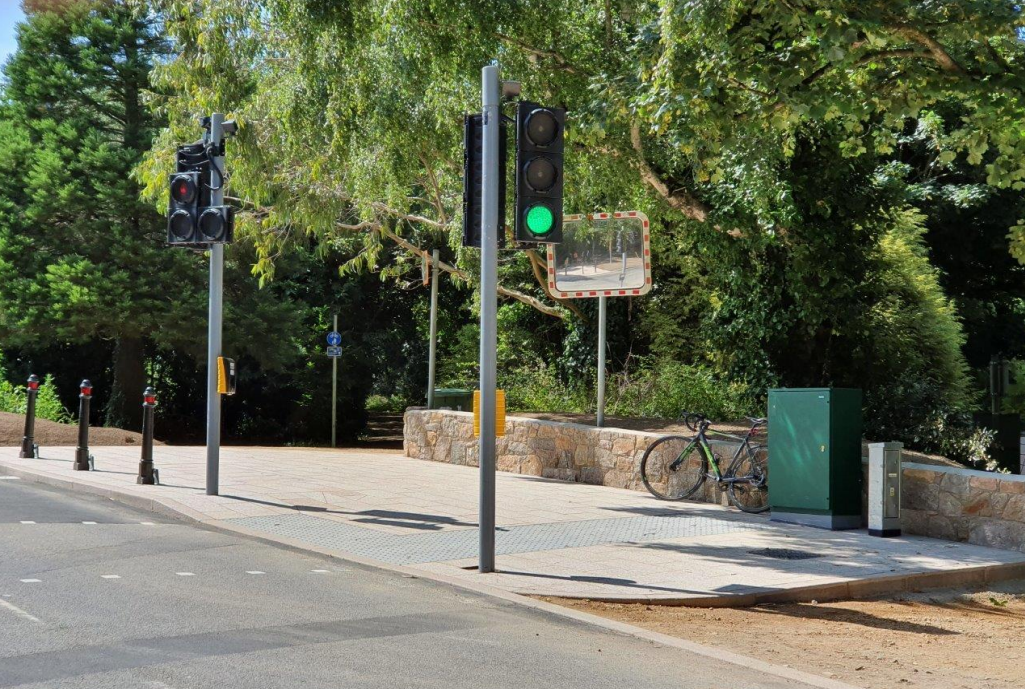Safe Roads
Safe Roads are essential for enhancing the safety and usability of our road network. Jersey’s roads, many of which were originally built for horse-drawn carriages, are narrow, with winding lanes and limited pedestrian pavements especially out of St. Helier and St. Savour. This unique infrastructure presents specific challenges for road safety.

Safe Roadside Features
Safe roadsides play a vital role in reducing the severity of collisions when vehicles leave the carriageway. By keeping roadsides clear of hazardous obstacles and incorporating protective features like guardrails and collision barriers, we can significantly minimise the risk of serious injury. These features act as a safety net, absorbing impact and guiding vehicles back onto the road where possible.
Designing roadsides with safety in mind ensures that even when mistakes happen, the consequences are less severe, protecting both drivers and passengers.

Improved Signage and Road Markings
Clear, visible road signage and well-maintained road markings are essential for guiding drivers and keeping road users safe. They provide critical information, such as warnings about sharp bends, pedestrian crossings, and speed limits, helping drivers anticipate and respond to potential hazards. By ensuring that signs are easy to read and road markings remain visible in all conditions, we can reduce confusion and encourage safer driving behaviour.
Well-placed and regularly maintained signage and markings are simple yet highly effective tools for improving road safety.

Utilising Technology
Technology plays a vital role in identifying and improving road safety. By assessing the safety of road networks and analysing detailed data on road conditions, it helps identify high-risk areas and prioritise improvements where they are needed most. This approach provides clear insights into where changes will have the greatest impact, allowing planners to design safer, more effective infrastructure.
With real-time analysis and evidence-based recommendations, technology enables us to take proactive measures to reduce collisions and protect all road users. It also empowers communities to understand risks and support targeted improvements, helping to make safer roads a reality for everyone.

Engineering Solutions
Road design and infrastructure improvements, such as traffic calming measures, are implemented to encourage compliance with speed limits and enhance overall road safety.
Before and After
“The images below illustrate the transformation of roads without safety calming features into a safer and more comprehensive part of road infrastructure.


